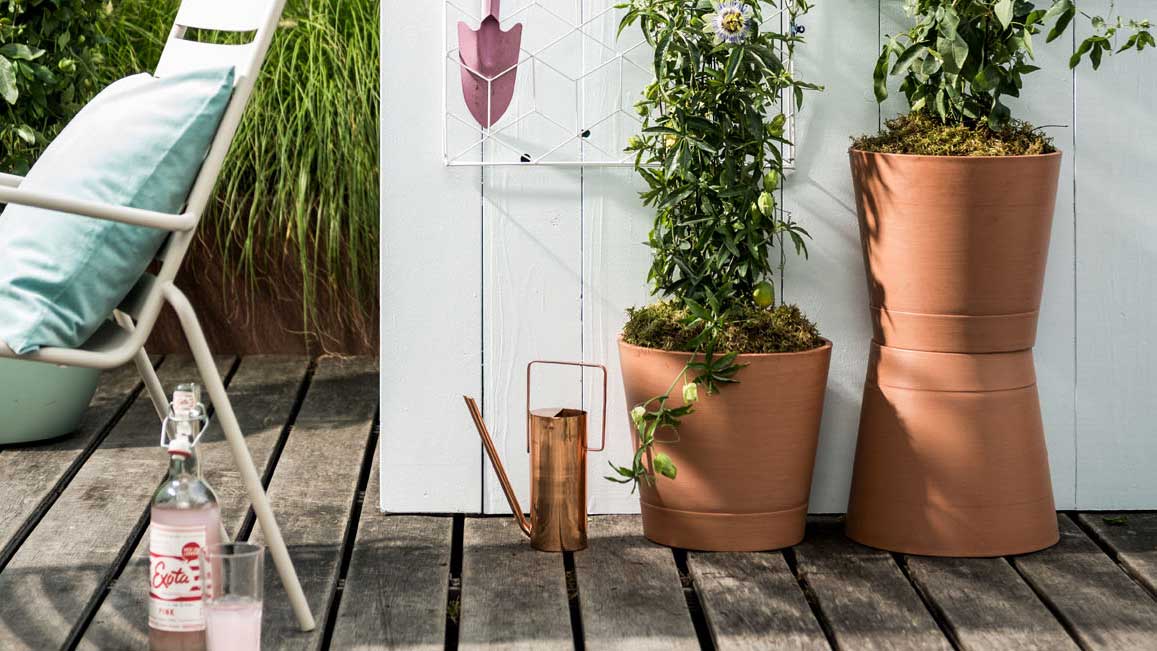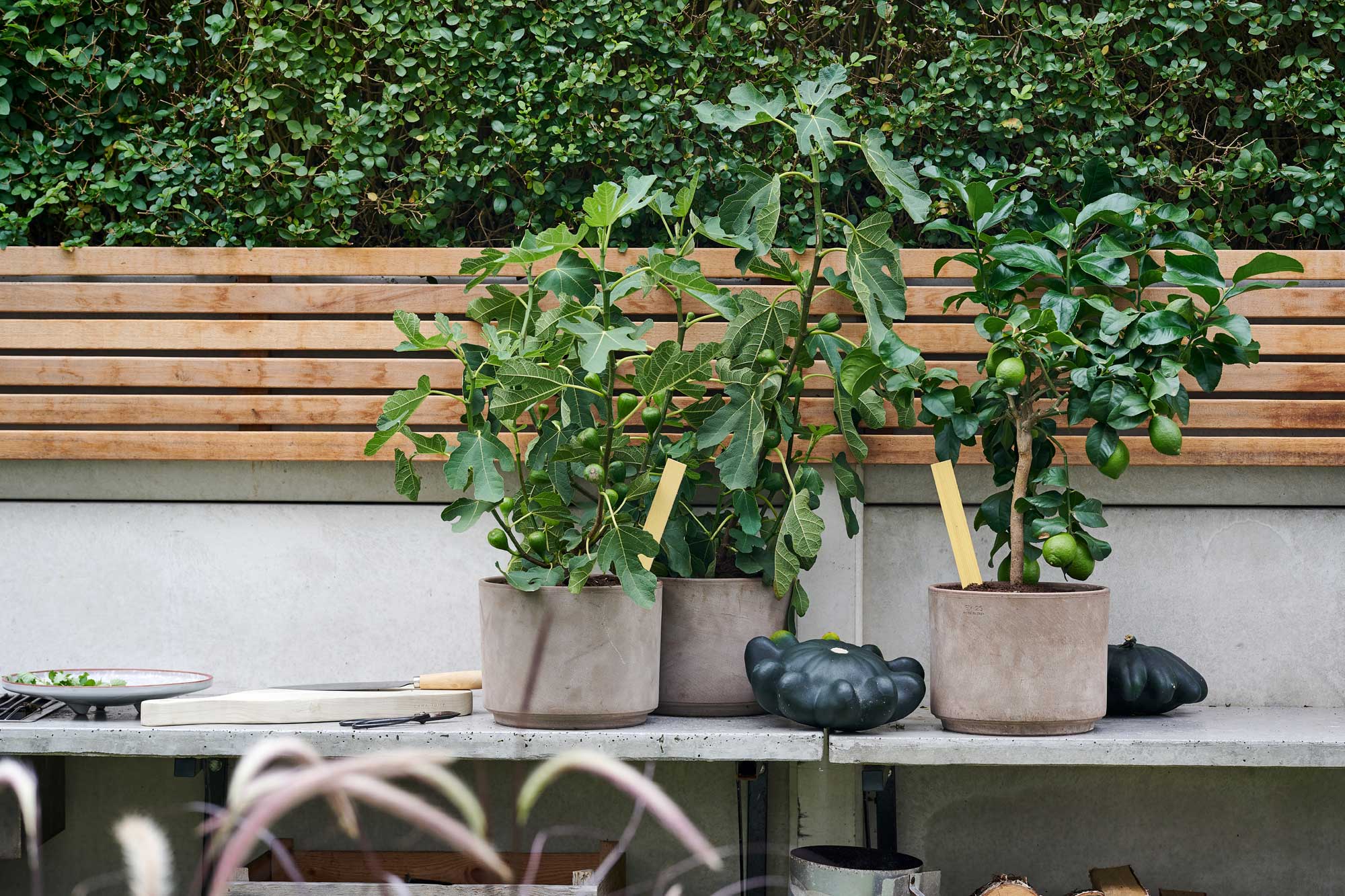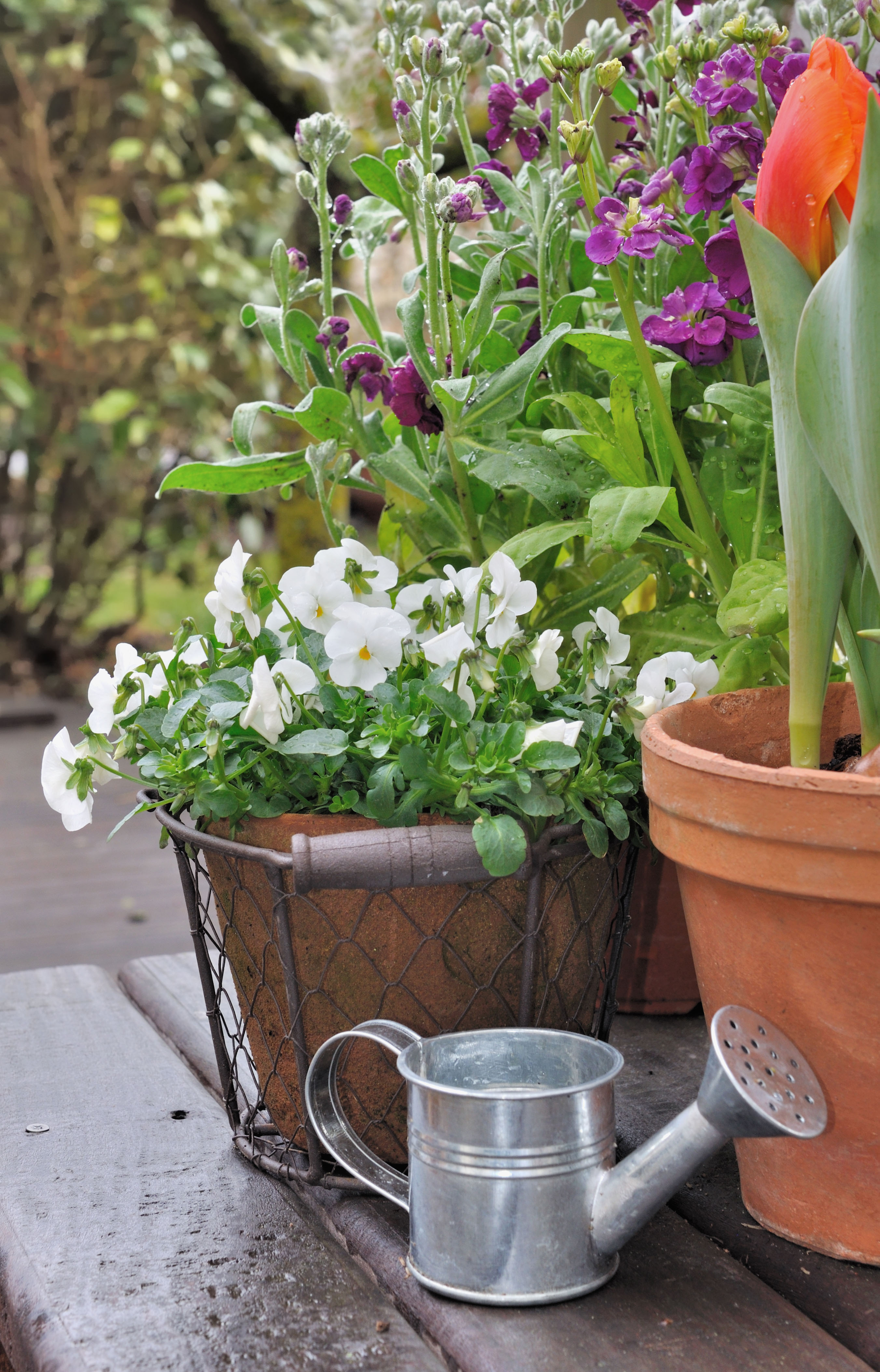
How do you water plants in pots? Seems like a trick question, right? How hard can it be to water your garden containers, after all. However, if you want to keep your potted plants happy and healthy, there's a few things you should know about how to water them the right way and some things you just simply should never do.
Whether you've got a couple of pots in a small backyard or balcony, or your container gardening extends to vast planting schemes, knowing the challenges that potted plants present is half the battle to a thriving garden.
We asked the experts for their do's and don'ts, and you might be surprised by their advice.
What’s the best way of watering plants in pots?
This may seem obvious but there are some crucial things to consider when watering your pots that are different to the rest of your modern garden. The most efficient way to water varies according to the plant, pot size, and location, but the basics are the same.
'The most efficient method is with a simple watering can fitted with a rose on the spout that applies a wider shower of water across the surface of the soil,' explains certified Master Gardener Karen Gibson, founder of the Sprouted Garden. 'The spout allows delivery of the water directly to the soil, beneath leaves and stems, without wetting the plant or flowers.'
You also want to make sure your "deep watering" your containers, as shallow watering can lead to issues further down the line. ‘Deep watering encourages the development of a robust and extensive root system, which allows plants to access water and nutrients more efficiently, explains Tony O’Neill, gardening expert and author. ‘Shallow watering only moistens the surface of the soil, leading to shallow-rooted plants that are more susceptible to drought and other environmental stresses’.
A deep water will penetrate to about eight inches to gain the full benefits. 'To ensure deep watering, water your plants until water drains from the bottom of the pot, and monitor the soil moisture to avoid overwatering,' Tony advises. You can do this in stages, monitoring the pot moisture after 30 minutes to avoid waterlogging your plant.
When’s the best time of day to water plants?
Is there a best time to water a garden? All our experts agree that early morning is the ideal time to water your container garden, before the heat of the day kicks in. 'This starts the plants' day with enough moisture to make it through the day, while drying out a bit before the evening hits,' Karen suggests.
'Watering at this time will also allow the roots to absorb more water before evaporation occurs,' John Stephens, co-founder of Total Gardener, agrees,

When's the worst time to water plants?
That one thing you should never do? Water your plants at the wrong time of day. Experts by in large agree that the middle of the day is one of the worst times to water containers. 'Watering in the afternoon heat is a no-go, as water can evaporate before reaching the roots,' says horticulturalist Amber Noyes, founder of Gardening Chores. This will result in soil dryness and can potentially hinder growth.
Others urge us to avoid watering in the late evening noting it as the worst time. Even in the heat of summer nights can be chilly which can become an issue if you water late in the day. 'Late evening is the worst time to water a plant, because if the night is a little chilly, the plant is essentially sitting in damp, chilly water for hours,' Karen explains. 'And by the time morning comes around, the moisture in the soil will not be enough to get the plant through the heat of the day.'
How much water do plants in containers need?
Watering your container plants is one of those times where it benefits you to pay attention to quantities. Too much water can lead to root rot and yellow leaves; too little water and leaves will begin to curl and brown. Raising the question, how much is the right amount? Plant type, container size and weather conditions all have a part to play in determining how much water is needed, so keep that in mind.
‘As a general rule of thumb, water your containers when the top inch of soil feels dry to the touch,’ says Zahid Adnan, founder of the Plant Bible. ‘Water until it starts to drain out of the bottom of the container, ensuring that the entire root ball is thoroughly moistened’.
Go back to the advice on "deep watering". 'Especially during the heat of summer, the best way to approach watering a pot is to apply the water slowly but steadily across the surface of the soil, so that it has a chance to spread evenly throughout the interior of the pot,' Master Gardener Karen Gibson says. 'Continue until water runs out through the drainage holes.'
Be careful not to overwater though. To check if your plant needs a top up ‘dip your finger about an inch deep into the soil and check if it feels dry. If so, it's time to water. If the soil still feels moist, wait longer before checking again,’ advises expert gardener John.

How do I stop my pots becoming waterlogged?
Over watering can lead to pots becoming waterlogged which essentially makes the the roots function redundant. If left for too long the plants with start to decay.
'Select the right potting mix for containers,' says John Stephens. 'A high-quality potting mix will retain water and help with drainage. It should contain materials, such as perlite, vermiculite, or sphagnum moss.'
Ensuring the water has somewhere to go is another necessity. Drainage holes prevent excess water from puddling at the base. 'Pots with drainage holes at the bottom will allow excess water to be removed,' John tells us. 'You don't necessarily need to buy pots with drainage holes, as you can make one yourself by drilling holes at the bottom.'
Using the appropriate size pot is paramount for avoiding waterlogging. Choosing too large a pot, known as overpotting, will allow the soil to stay moist for longer, leading to waterlogging. Try to make a choice appropriate for your size of plant.
How do I stop my container plants from drying out?
To the other extreme, how can we ensure plants aren’t left thirsty? Firstly, you should keep an eye out for the signs of dehydration which include, wilted of dry leaves, brown edges and when the soil has pulled away from the sides of the container.
‘To prevent your containers from becoming too dry, add mulch to the top of the soil,’ Zahid advises. ‘Mulch helps to retain moisture and keep the soil cool.’ He also suggests creating a microclimate by grouping containers together which helps to further retain moisture.
All these watering considerations in mind can seem like a lot of work. Feeling overwhelmed shouldn’t deter you from creating a container garden as there are alternative methods to help ease you into parenthood. Installing a drip irrigation system can be a great option for busy gardeners. They require minimal effort and can even continue to work when you're on holiday. Returning home to a healthy-looking container garden ensures the post-holiday bliss endures.







